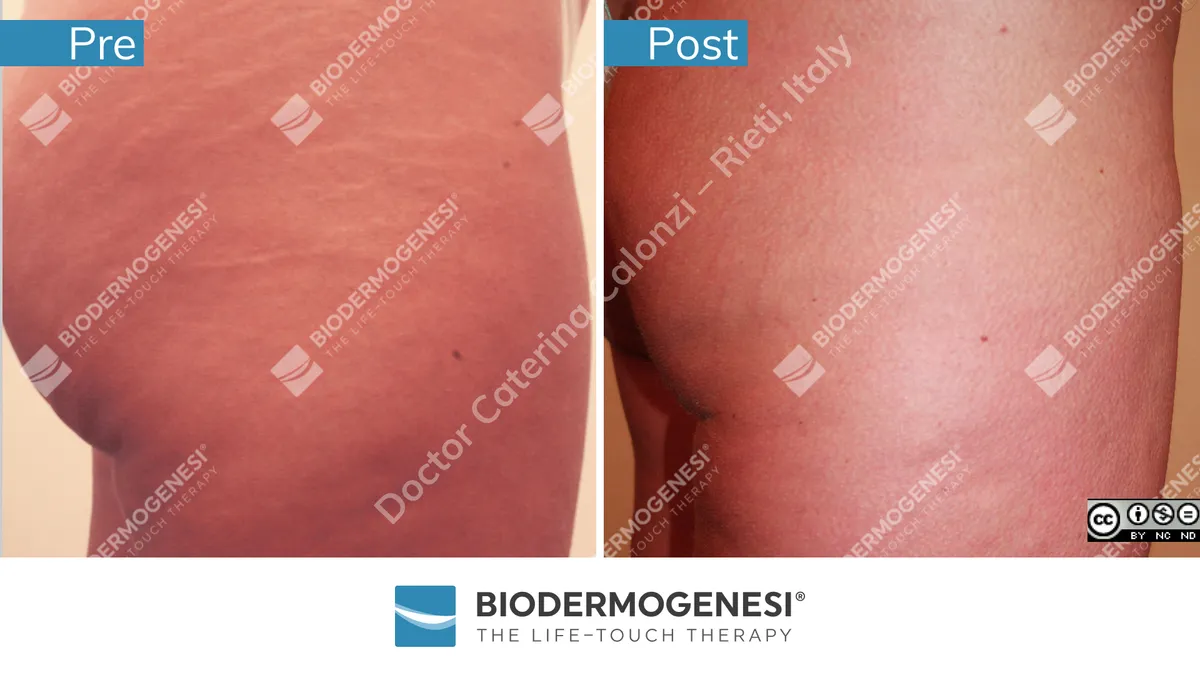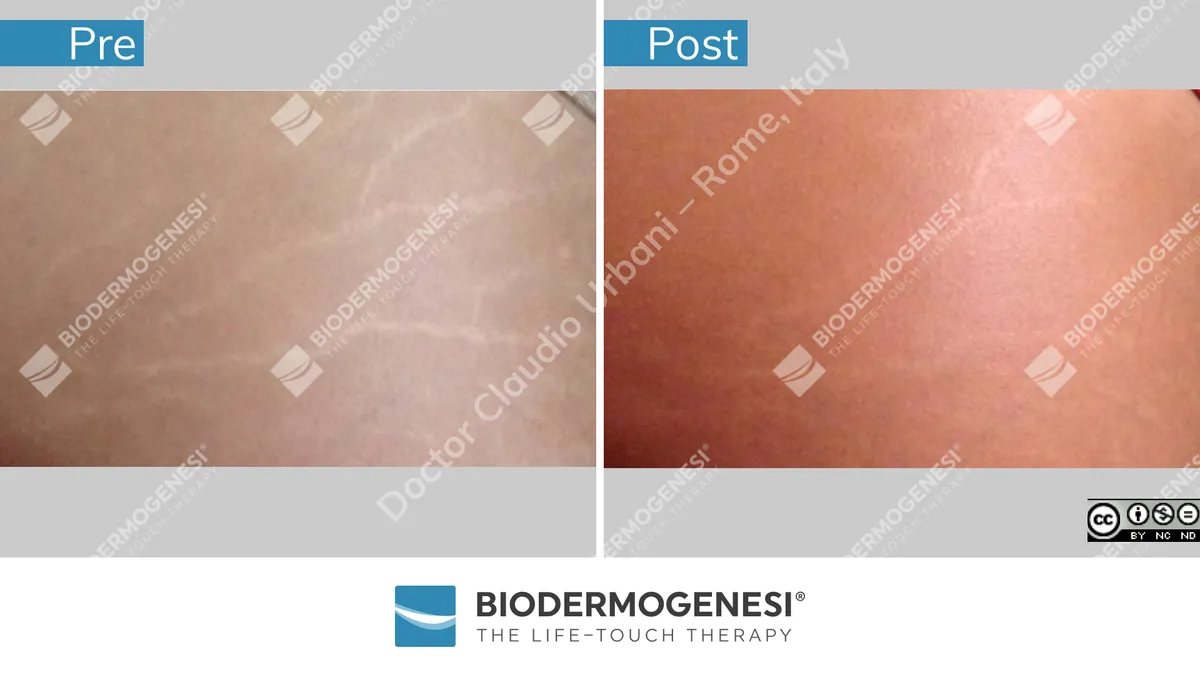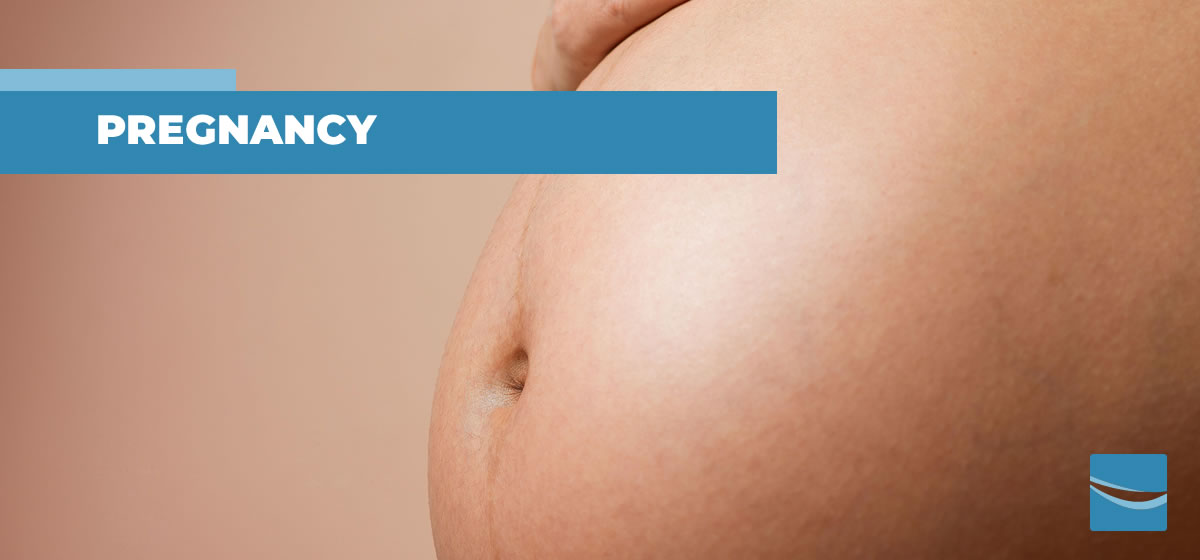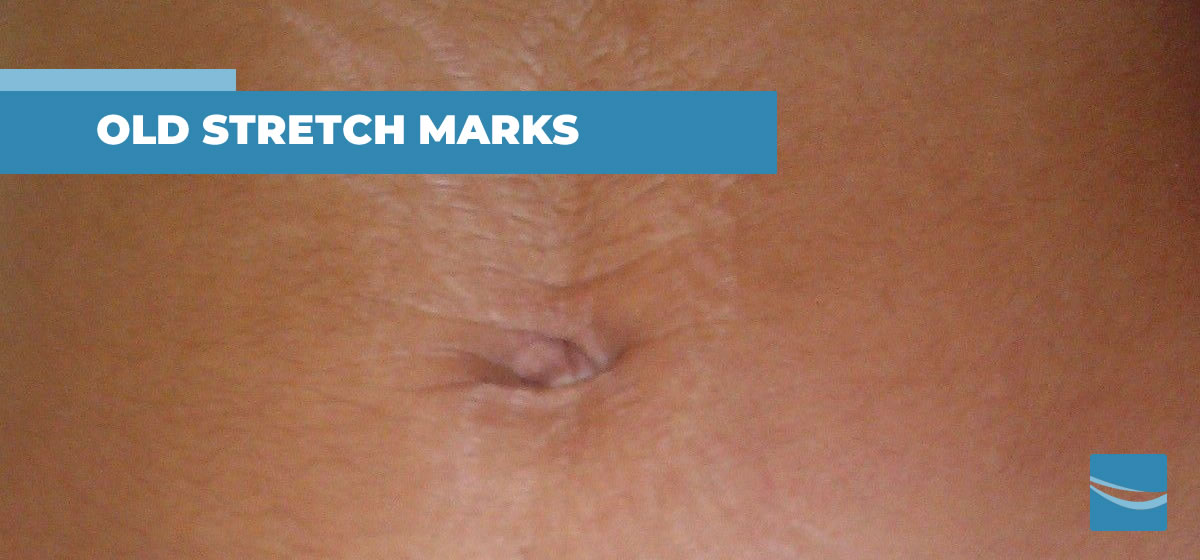Why do not stretch marks tan?
Discovering the real reason why stretch marks do not tan
Stretch marks are a dermal pathology characterised, among other things, by the incapability of tanning with sun exposure.
More precisely, it is correct to distinguish the red stretch mark, which generally continues to tan, from the white stretch mark, which instead fails to pigment during the summer, becoming more different and visible compared to the surrounding tanned skin, to the point of causing the unpleasant ‘zebra effect’.
But why does the stretch mark initially get tanned and then all of a sudden, it is no longer able to do so for life? What does change the balance of the striated skin?
These questions are answered by Professor Hague from the University of Manchester [01] who observed how the skin structure of striated tissue changes in time.
We know that tanning is a reaction to the excessive quantity of ultraviolet rays, which stimulate our skin to produce melanin that forms a proper filter against these rays and gives our skin a darker colour.
But what does our skin need to produce melanin and why are stretch marks no longer able to do it?
Melanin is produced by specific structures in the skin called melanocytes, located in the basal membrane which forms a thin barrier that separates the epidermis from the dermis. The basal membrane comes up in a sinusoidal shape and is positioned at a depth that allows the melanocyte activation by light rays that are able to pass through our skin.
When the excessive quantity of ultraviolet rays floods the basal membrane, melanocytes activate the melanin production, increase our skin defence against the risk of melanoma and give our skin the tan colour.
The University of Manchester analysed how the striated skin changes and noted that during the first two years, when the stretch marks are red or not yet white, the variations are marginal and mainly involve collagen and elastic fibres. Then, there is a progressive destruction of the basal membrane, the deconstruction of which prevents the activation of the tanning process.
Recently, research which the University of Chieti-Pescara and the University of Verona [02] involved in confirmed the total deconstruction of the basal membrane but also demonstrated the progressive loss of melanocytes. In the absence of these elements, it is clear that our skin is no longer able to produce melanin and therefore the stretch mark does not tan.
This process is generally considered irreversible and it is thought that stretch marks cannot go back to tan. This belief has been contradicted by a clinical study conducted by the School of Dermatology of the University of Pisa [03], which was the first to prove that Biodermogenesi® is able to reorganise the basal membrane and reproduce new melanocytes that can make stretch marks tan again.
Later, the other researchers [02, 04, 05] confirmed that Biodermogenesi® is the unique method that enables the natural tanning of stretch marks, even those more than 20 years [06].
This is also confirmed by a study which shows, thanks to histochemical analysis, that the stretch marks treated with Biodermogenesi® recover a number of melanocytes similar to those found in the adjacent skin tissue and therefore gradually get tan with the same intensity as healthy skin, without any side effects.
References:
- Adam Hague, Ardeshir Bayat. Therapeutic targets in the management of striae distensae: A systematic review. J Am Acad Dermatol Vol 77, number 3, September 2017:559-568
http://dx.doi.org/10.1016/j.jaad.2017.02.048 - Antonio Scarano, Andrea Sbarbati, Roberto Amore, Eugenio L. Iorio, Giuseppe Ferraro, Felice Lorusso, Domenico Amuso. A New Treatment for Stretch Marks and Skin Ptosis with
Electromagnetic Fields and Negative Pressure: A Clinical and Histological Study. J Cutan Aesthet Surg. 2021 Apr-Jun; 14(2): 222–228. doi: 10.4103/JCAS.JCAS_122_20: 10.4103/JCAS.JCAS_122_20 - Artigiani A, Cervadoro G, LogginiB, Paolicchi A. Biodermogenesi®: la soluzione non invasiva nel trattamento delle smagliature. La Medicina Estetica 2012; 1,41-49
- Bacci PA, Alberti G, Amuso D, Artigiani A, Benitez Roig V, Di Nardo V, Garcia-Gimenez V, Greco D, Laura S, Pagano M, Reale A, Sarracco I, Saracoglu S, Urbani C, Venditti E, Wade M, Zunica R. The synergy between vacuum and electromagnetic fields in the treatment of striae distensae: retrospective study on 917 patients with clinical and histological case records A possible treatment for striae distensae. Journal of Applied Cosmetology, Vol. 39 iss. 1 (January-June, 2021): 43-54. ISSN 0392-8543
- Veronese S, Bacci PA, Garcia Gimenez V, Canel Micheloud CC, Haro García NL, Sbarbati. A. V-EMF therapy: A new painless and completely noninvasive treatment for striae gravidarum. J Cosmet Dermatol. 2024;00:1-8. doi:10.1111/jocd.16220
- Alberti G, Laura S. Treatment of stretch marks aged more than twenty years with the synergy of electromagnetic field and vacuum. Clinical case studies and subsequent follow up. Aesthetic Medicine 2019; 5(1)14-21.





